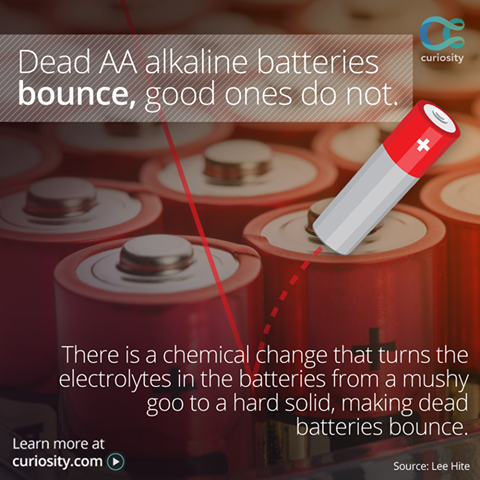
Dead or depleted batteries, especially cylindrical ones like AA or AAA batteries, can exhibit a unique behavior known as "bouncing" when dropped from a short height. This phenomenon is primarily due to changes in the battery's internal chemistry and physical properties as it becomes discharged.
Inside a battery, there are chemical reactions that generate electrical energy. As a battery discharges and its chemical energy is depleted, its internal chemistry changes. One of the changes that occur is a reduction in the pressure of gases within the battery. This decrease in gas pressure can make the battery feel lighter, contributing to its bounce.
As a battery discharges, its internal components, such as the cathode, anode, and electrolyte, undergo changes. These changes can lead to a reduction in the battery's overall weight. A lighter battery is more likely to bounce when dropped because it doesn't hit the surface with as much force as a fully charged, heavier battery.
Dead batteries may also experience a reduction in structural integrity. As they discharge, some of the materials inside the battery break down or undergo changes, making the battery less rigid. This reduced rigidity can contribute to the battery bouncing when it hits a surface.
Here's how to perform the "bounce test":
1
st: Hold the battery horizontally, about 6 inches above a flat surface.
2
nd: Drop the battery. If it bounces and falls over, it's likely still good. If it bounces and stands upright or doesn't bounce at all, it may be dead or close to it.